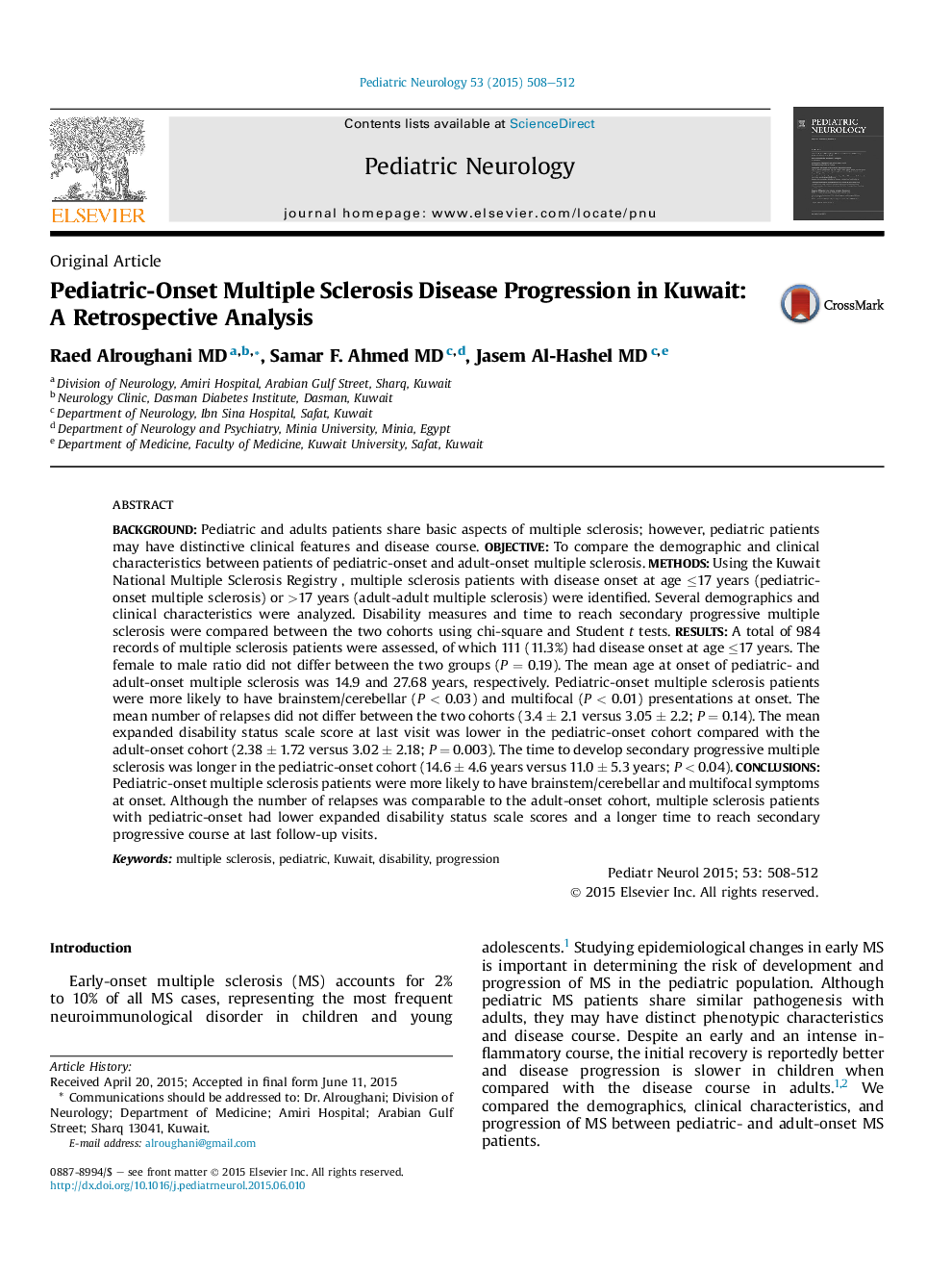| Article ID | Journal | Published Year | Pages | File Type |
|---|---|---|---|---|
| 3084691 | Pediatric Neurology | 2015 | 5 Pages |
BackgroundPediatric and adults patients share basic aspects of multiple sclerosis; however, pediatric patients may have distinctive clinical features and disease course.ObjectiveTo compare the demographic and clinical characteristics between patients of pediatric-onset and adult-onset multiple sclerosis.MethodsUsing the Kuwait National Multiple Sclerosis Registry , multiple sclerosis patients with disease onset at age ≤17 years (pediatric-onset multiple sclerosis) or >17 years (adult-adult multiple sclerosis) were identified. Several demographics and clinical characteristics were analyzed. Disability measures and time to reach secondary progressive multiple sclerosis were compared between the two cohorts using chi-square and Student t tests.ResultsA total of 984 records of multiple sclerosis patients were assessed, of which 111 (11.3%) had disease onset at age ≤17 years. The female to male ratio did not differ between the two groups (P = 0.19). The mean age at onset of pediatric- and adult-onset multiple sclerosis was 14.9 and 27.68 years, respectively. Pediatric-onset multiple sclerosis patients were more likely to have brainstem/cerebellar (P < 0.03) and multifocal (P < 0.01) presentations at onset. The mean number of relapses did not differ between the two cohorts (3.4 ± 2.1 versus 3.05 ± 2.2; P = 0.14). The mean expanded disability status scale score at last visit was lower in the pediatric-onset cohort compared with the adult-onset cohort (2.38 ± 1.72 versus 3.02 ± 2.18; P = 0.003). The time to develop secondary progressive multiple sclerosis was longer in the pediatric-onset cohort (14.6 ± 4.6 years versus 11.0 ± 5.3 years; P < 0.04).ConclusionsPediatric-onset multiple sclerosis patients were more likely to have brainstem/cerebellar and multifocal symptoms at onset. Although the number of relapses was comparable to the adult-onset cohort, multiple sclerosis patients with pediatric-onset had lower expanded disability status scale scores and a longer time to reach secondary progressive course at last follow-up visits.
